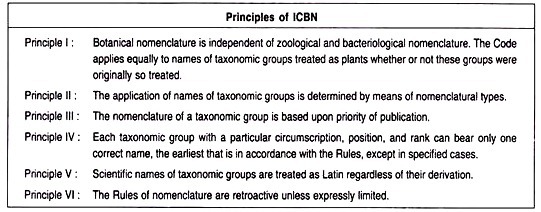ADVERTISEMENTS:
Phenomenon of Alternation of Generations and Reduplication in the Life-History of Ectocarpus!
Distribution:
Ectocarpus is world-wide in distribution and possesses many species. This is most primitive of all the brown algae.
The species are commonly found in the colder seas of the temperate and polar regions.
ADVERTISEMENTS:
They are very common along the Atlantic coast. The plants occur attached to the rocks in the littoral and sublittoral zones. Many species are epiphytic upon the members of Fucales and Laminariales. E. tomentosus is an epiphyte upon the species of Fucus. E. fasciculatus is found growing on the fins of certain fish in Swedish waters.
Structure:
The plant body is filamentous and heterotrichous. It is differentiated into prostrate and erect thalli. The prostrate portion is found attached to the substratum and remains creeping on it. The branches of the erect system of the plant area given out from the prostrate system. Comparatively, the prostrate portion of the plant is much branched than that of the erect portion. The ultimate branches of the erect portion are generally thin and pointed.
ADVERTISEMENTS:
The cells of the branches of the erect portion are uniseriately arranged end to end. The branching is always lateral and the branches arise just beneath the septa. In certain species the older branches are ensheathed or corticalted by a layer of the branches of the rhizoids.
The cells of Ectocarpus are small, cylindrical, uninucleate and with a few band-shaped chromatophores of irregular shape. Sometimes the cells contain many discoid chromatophores. The cell wall is thick and consists of three pectic cellulose layers.
The cell wall is mucilaginous. The protoplast is differentiated into a single nucleus and cytoplasm. Naked pyrenoid-like structures are present in the golden-brown chromatophores. The plastids contain chlorohyll a, chlorophyll b, xanthophylls and a brown pigment fucoxanthin.
Growth:
It is apical in prostrate system and trichothallic, i.e., by means of intercalary meristem located at the base of multicellular hair. The meristematic cells cut off new cells towards the upper side transversely.
Reproduction:
The reproduction takes place by means of asexual and sexual methods.
The asexual reproduction takes place by means of biflagellate zoospores known as neutral spores produced within neutral and unilocular sporangia found upon asexual plants (sporophyte) also known as diploid thalli (2n).
Unilocular sporangia:
The terminal cell of a short branchlet enlarges in size and develops into an unilocular sporangium. The number of chromatophores increases within the young sporangium, and the young sporangium becomes several fold in size. The single nucleus found within the sporangium divides and redivides and ultimately 32 or 64 nuclei are formed.
ADVERTISEMENTS:
The first division is reductional one. After the formation of the nuclei, there is cleavage, which results into uninucleate protoplasts. Each such protoplast possesses a chromatophore. Very soon each uninucleate protoplast metamorphoses into a biflagellate zoospore. The zoospores are pyriform in shape. The two unequal flagella are laterally inserted on each zoospore. The longer flagellum is directed forward and the shorter backward. The zoospores are extruded en masse through a small opening
found at the distal end of the sporangium. The zoospores of the mass remain inactive about for a minute and thereafter, they become motile swim here and there in the water. Ultimately the zoospores come to the rest on substratum and lose their flagella. The protoplasts become round and give rise to new haploid plants.
Plurilocular sporangia:
ADVERTISEMENTS:
The plurilocular sporangium develops from the terminal cell of a lateral branchlet. This cell divides several times repeatedly producing a vertical row of 6 to 12 cells. Several other vertical and transverse divisions take place and ultimately several hundred small cubical cells are formed which are arranged in 20 to 40 transverse tiers.
There is no reduction division. The protoplast of each diploid cubical cell metamorphoses into a biflagellate neutral zoospore. The zoospores liberate outside to the sporangium by means of apical or lateral pore. The zoospores resemble in shape to the zoospores produced by unilocular sporangia.
The zoospores swim for a short while and then settle down on some substratum, retract their flagella and directly give rise to new sporophytic (2n) plants. These plants once again bear unilocular and plurilocular sporangia. These sporophytic plants never produce plurilocular gametangia. The plurilocular gametangia are produced upon the plants which are developed from the zoospores of unilocular sporangia.



